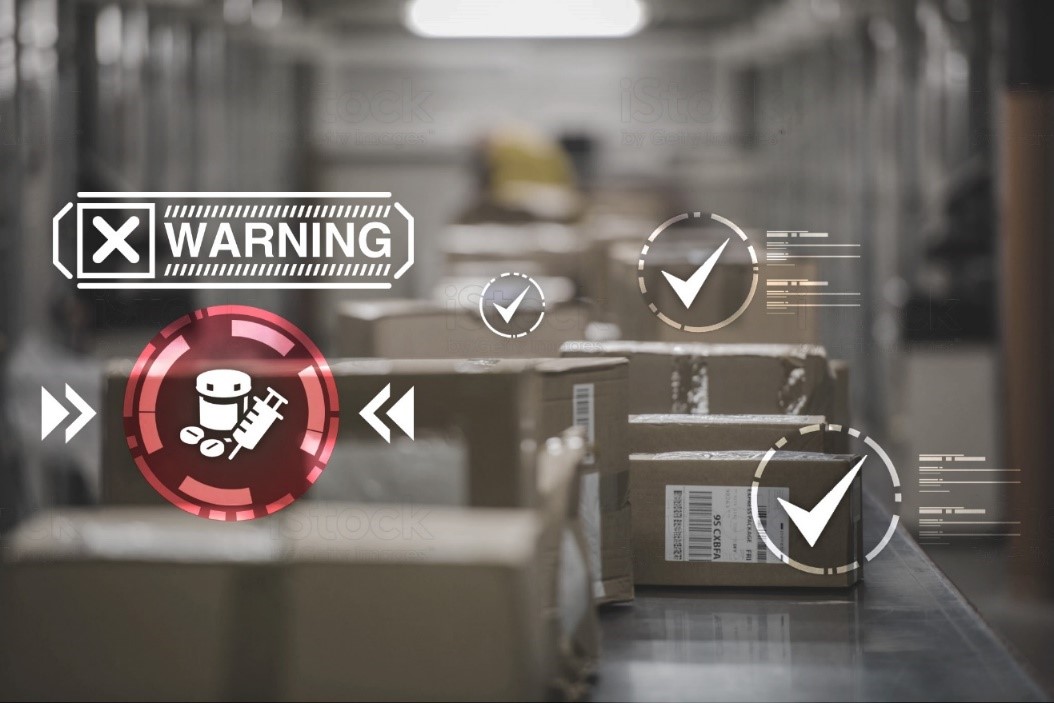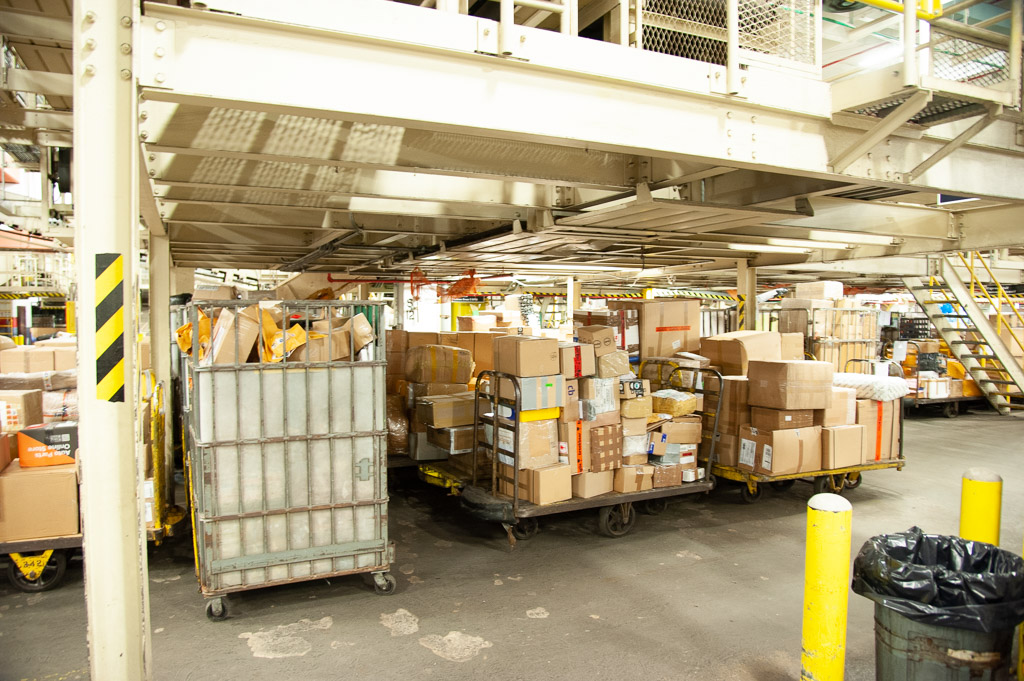
Over the past six years, the quantity of confiscated synthetic opioids like fentanyl at U.S. ports of entry has multiplied. In 2013, the U.S. Customs and Border Protection (CBP) seized only two pounds of fentanyl. That number grew to 460 pounds in 2016, skyrocketed with seizures of nearly 1,400 pounds in 2017, and surpassed 1,800 pounds in 2018. Fentanyl enters the U.S. via two major routes: international mail/express consignment and land borders. This increases the need for upgrading and improving existing screening equipment and developing new solutions.
That is why CBP recently joined forces with the Department of Homeland Security’s Science and Technology Directorate (S&T) for a project called Synthetic Opioid Detection at Speed (SODAS).
The International Mail Facility at JFK, one of the busiest mail facilities, receives nearly one million packages per day. CBP must ensure lawful trade is facilitated while simultaneously stopping suspicious or dangerous packages. Current methods and equipment need to be upgraded or redesigned to effectively inspect incoming mail and packages more efficiently. The need is urgent.
“Our role is to help CBP’s Office of Field Operations identify and develop the capabilities to detect drugs being smuggled in mail facilities,” said Dr. Rosanna Robertson, S&T’s Opioid Program Manager.
History
The program started after the release of a report by the President’s Commission on Combating Drug Addiction and the Opioid Crisis in October 2017. This report made several critical recommendations for the improvement of CBP’s ability to detect opioids.
“This S&T program, which initially focuses on operations at international mail and express consignment facilities, is looking for a layered set of solutions to create efficiencies and provide flexibility in deployment to the existing operational infrastructure,” said Andre Hentz, S&T’s Deputy Under Secretary (Acting). “Solutions include both detection hardware and advanced analytics.”
One of Robertson’s goals for the program was to find or develop efficient screening technology for opioids and to deliver the first incremental improvement in 12 to 18 months.
The Opioid Detection Challenge
In February 2019, S&T, in collaboration with CBP, the Office of National Drug Control Policy, and the United States Postal Inspection Service, launched the Opioid Detection Challenge. The $1.55 million prize competition called upon innovators to submit novel ideas for automated, non-intrusive screening solutions that have the potential to quickly and accurately detect illicit opioids in parcels, without disrupting the flow of mail.
For Stage 1 of the Challenge, 83 submissions were received from the U.S. and abroad. In June 2019, judges selected eight finalists, who were each awarded $100,000 and advanced to Stage 2 of the competition. Candidates varied from individuals and small businesses to large corporations and universities proposing different types of solutions – artificial intelligence and machine learning, spectrometry and spectroscopy, robotic noses or other sensor technologies and computed tomography. In Stage 2, finalists are participating in a 14-week prototyping accelerator (from June to October) during which they will develop their plans into testable prototypes and compete for two additional prizes – a grand prize worth $500,000 and a runner-up for $250,000.
“We are very impressed with the range of solutions submitted, from machine learning to hyperspectral imaging to X-ray diffraction technologies,” said Robertson. “We look forward to working with the finalists to pilot and deploy the best of their technologies in operational environments.”

Modifying existing technologies
The Opioid Detection team is already assessing existing relevant technologies.
“We are evaluating the ability of existing technologies, such as those used by TSA for aviation security, to detect opioids in mail,” said Robertson.
Implementing the use of advanced CT scanners may help improve the speed and success of the current interdiction process at mail facilities, which presently relies primarily on inspectors’ experience, as well as canines and X-ray imaging. The improvements could help officers screen more rapidly and effectively for suspicious packages.
S&T is also looking to see whether modifications of current technology detecting trace explosives could be applied to opioids.
“Existing technologies can be programmed to detect various chemicals, including fentanyl,” said Laura Parker, Program Manager for S&T’s Secondary Screening Program, which focuses on research, development, testing and evaluation of the next generation of explosive trace detectors to enhance explosive detection capabilities across the Homeland Security Enterprise.
In written testimony to the U.S. Senate from January 25, 2018, CBP Executive Assistant Commissioner Todd Owen noted, “Illicit drug manufacturers also seek to outpace the law by continually manufacturing new drug analogues, challenging CBP’s targeting and detection capabilities.”
The Opioid Detection Program will explore the feasibility of detection of vapors of impurities, cutting agents, and contaminants in the drugs.
“There are techniques to detect very low vapor signatures, but inside a packaged material like that it is a big challenge,” said Dr. Shannon Fox, the Director at S&T’s Chemical Security Analysis Center. “However, more volatile contaminants inside the fentanyl might be detectable.”
The way ahead
“The more adaptable these new solutions are, the better CBP can carry out its mission,” Robertson said. “And then, it is not going to matter what the next designer drug is going to look like. Thanks to the close collaboration with CBP on these S&T efforts, within several years the mail facilities may have a new solution for the screening of opioids.”
A new project, beginning in September 2019, will focus on advanced algorithm development for a 3-D container screening system at the Port of Boston’s Conley Terminal. Robertson’s team will evaluate how well that system can detect chemical substances like opioids and other narcotics in complex cargos.
S&T is also looking at working with the U.S. Coast Guard on a technology solution to better identify trace quantities of opioids. When Coast Guard officers board suspicious ships, they need portable devices that have the ability to not only identify opioids and other narcotics but also other hazardous agents. These portable devises need to be durable in maritime conditions.
“We are currently focusing on the mail, but opioids are clearly entering the U.S. by land, air and sea,” said Robertson.

